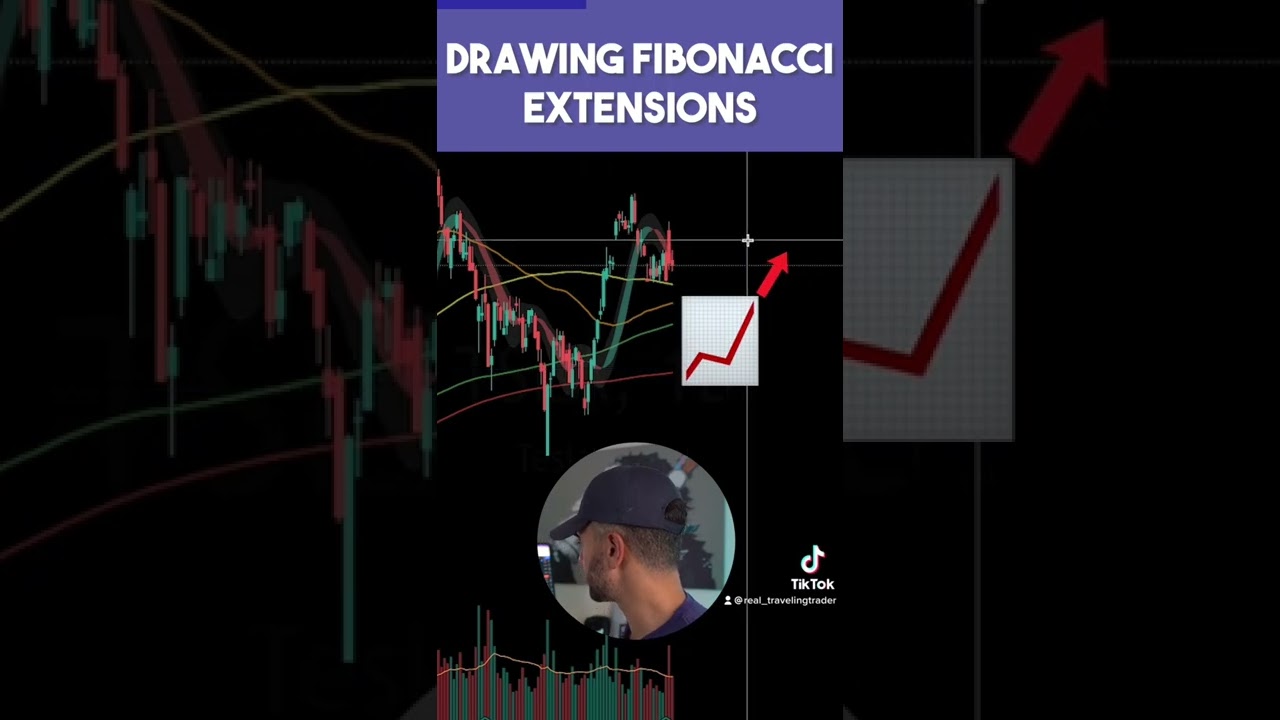Learn to use the Fibonacci tool to identify potential support and resistance. There are two ways to draw it; measuring downtrend or uptrend. Use the tool to measure uptrend from top to the bottom. Use it to measure downtrend from bottom to top. The tool works on Tesla, which bounced off the 300ma and it’s going up. It also works on Disney, where it failed to find support at .618 and the next potential support level is .786.
How to Use the Fibonacci Tool to Identify Potential Support and Resistance
The Fibonacci tool is a technical analysis tool that traders use to identify potential support and resistance levels. In this article, we will show you how to use the Fibonacci tool in less than 60 seconds.
Measuring Fibonacci in Uptrend
There are generally two ways to draw the Fibonacci tool. If you’re measuring the downtrend or uptrend, we will be measuring an uptrend for this example. So, when you’re measuring up trends, you start at the top, and you click on the swing low that we identified earlier.
Tesla Example
For example, let’s take a look at Tesla stock. Tesla bounced off the 300 MA and is now going up. Here is how we measure it. We have one click at the top and one click at the swing low. You can see that Tesla got stopped at the 0.786 fib level and found support at the 0.5 fib level.
Measuring Fibonacci in Downtrend
If you are looking at a stock that is in a clear downtrend, like Disney, you will plot from bottom to top. In this case, we have the swing low here and the swing high here.
Disney Example
Here is how we measure Disney to find potential support levels. We click once at the bottom and once at the top. Disney tried to find support at the .618 but failed. So, our next potential support level is 0.786.
Understanding Fibonacci Levels
Now that we have the Fibonacci levels, we need to understand what they mean. The Fibonacci retracement levels are essentially different points within a trend where a stock may experience support or resistance.
0.236 Level
The 0.236 level often represents a minor support or resistance level. If a stock retraces to this level, it may be a good time to buy or sell depending on your trading strategy.
0.382 Level
The 0.382 level is another minor support or resistance level. If a stock retraces to this level, it may be a good entry or exit point for traders.
0.5 Level
The 0.5 level represents a more significant support or resistance level. If a stock retraces to this level, it may have a higher probability of finding support or resistance.
0.618 Level
The 0.618 level often marks a major support or resistance level. If a stock retraces to this level, it may be a good time to enter or exit a trade.
0.786 Level
The 0.786 level is another major support or resistance level. If a stock retraces to this level, it may be a good entry or exit point for traders.
1.0 Level
The 1.0 level is not technically a Fibonacci level but is often used as a target level. If a stock retraces to this level, it means that it has retraced 100% of the original move.
Conclusion
In conclusion, the Fibonacci tool is a valuable technical analysis tool that traders use to identify potential support and resistance levels. To use the Fibonacci tool, you need to identify the swing high and the swing low and plot from there. Understanding the different Fibonacci levels can help you make informed trading decisions.

